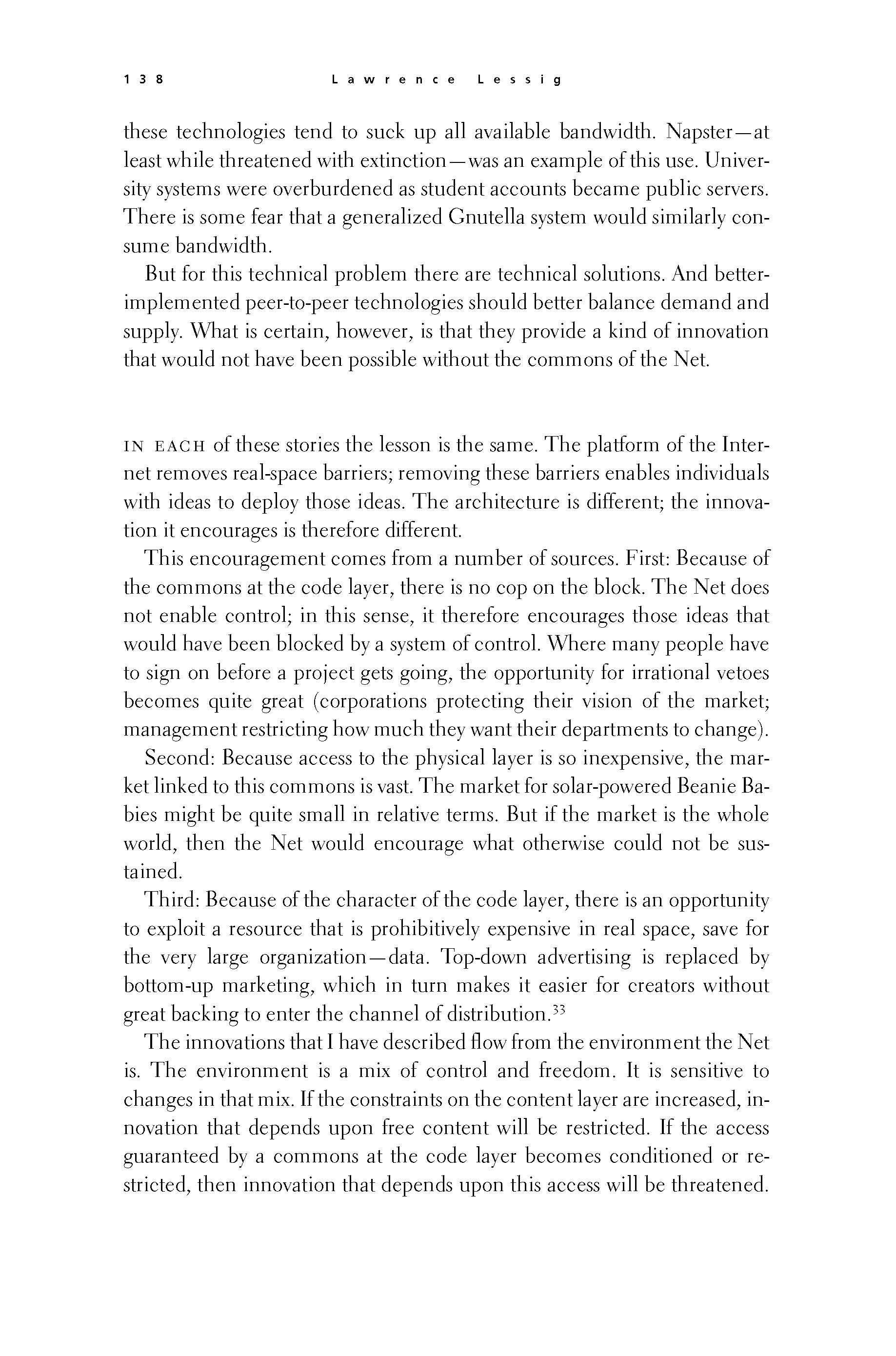 p137 _
-chap- _
toc-1 _
p138w _
toc-2 _
+chap+ _
p139
p137 _
-chap- _
toc-1 _
p138w _
toc-2 _
+chap+ _
p139
these technologies tend to suck up all available bandwidth. Napster -- at
least while threatened with extinction -- was an example of this use. Univer-
sity systems were overburdened as student accounts became public servers.
There is some fear that a generalized Gnutella system would similarly con-
sume bandwidth.
But for this technical problem there are technical solutions. And better-
implemented peer-to-peer technologies should better balance demand and
supply. What is certain, however, is that they provide a kind of innovation
that would not have been possible without the commons of the Net.
///\\\
In each of these stories the lesson is the same. The platform of the Inter-
net removes real-space barriers; removing these barriers enables individuals
with ideas to deploy those ideas. The architecture is different; the innova-
tion it encourages is therefore different.
This encouragement comes from a number of sources. First: Because of
the commons at the code layer, there is no cop on the block. The Net does
not enable control; in this sense, it therefore encourages those ideas that
would have been blocked by a system of control. Where many people have
to sign on before a project gets going, the opportunity for irrational vetoes
becomes quite great (corporations protecting their vision of the market;
management restricting how much they want their departments to change).
Second: Because access to the physical layer is so inexpensive, the mar-
ket linked to this commons is vast. The market for solar-powered Beanie Ba-
bies might be quite small in relative terms. But if the market is the whole
world, then the Net would encourage what otherwise could not be sus-
tained.
Third: Because of the character of the code layer, there is an opportunity
to exploit a resource that is prohibitively expensive in real space, save for
the very large organization -- data. Top-down advertising is replaced by
bottom-up marketing, which in turn makes it easier for creators without
great backing to enter the channel of distribution.[8-33]
The innovations that I have described flow from the environment the Net
is. The environment is a mix of control and freedom. It is sensitive to
changes in that mix. If the constraints on the content layer are increased, in-
novation that depends upon free content will be restricted. If the access
guaranteed by a commons at the code layer becomes conditioned or re-
stricted, then innovation that depends upon this access will be threatened.
[[138]]
p137 _
-chap- _
toc-1 _
p138w _
toc-2 _
+chap+ _
p139